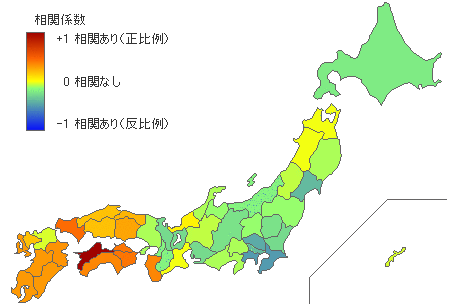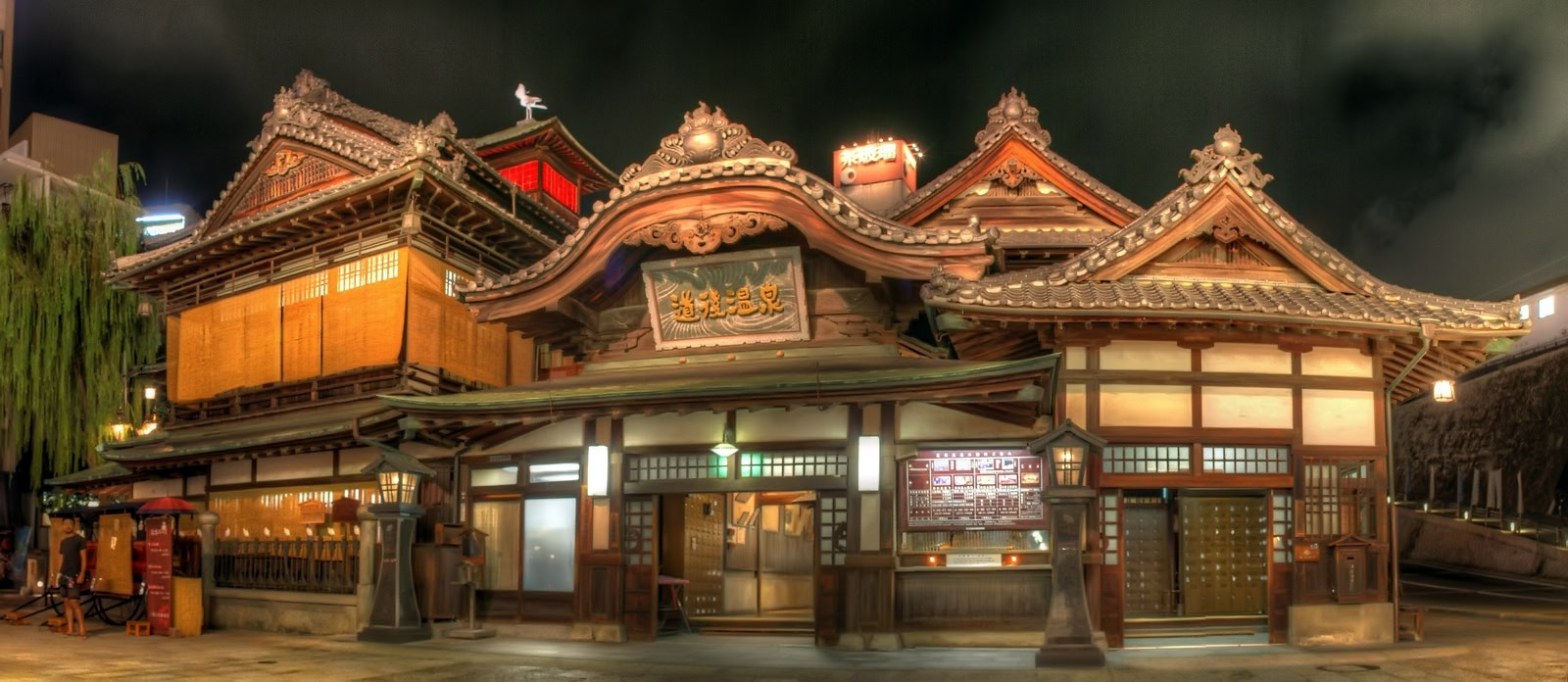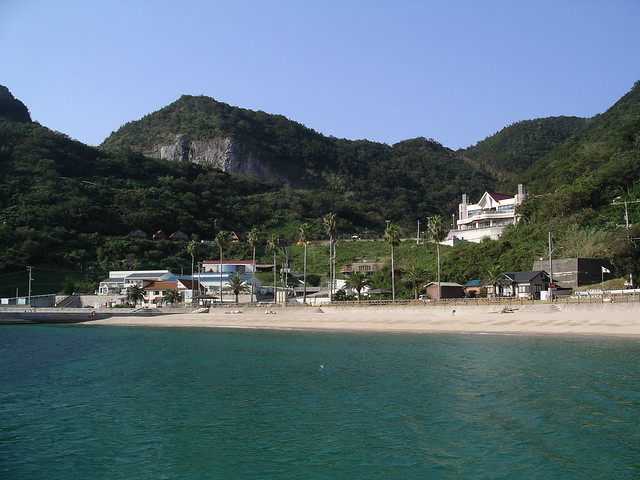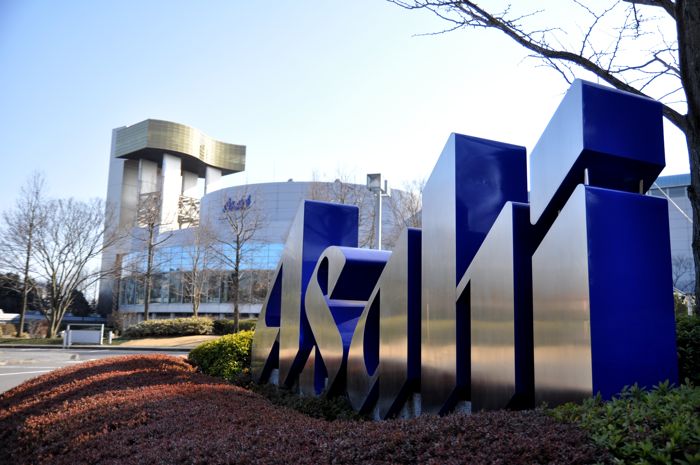
 |
| Ehime's flag |


Ehime is on the north-western part of Shikoku, the smallest of Japan's 4 main islands. While Ehime is largely a rural prefecture, it boasts the largest city on Shikoku, Matsuyama (over 500, 000 people), and is also home to some of Japan's cultural treasures which you will learn about later.
Facing the Seto Inland Sea and the Uwa Sea, Ehime Prefecture is blessed with a variety of nature: open fields, basin-shaped valleys, high mountains, rivers and hot springs. The coast of the Seto Inland Sea (upper coast) is dotted with many islands both large and small and is sometimes called the Eastern Aegean Sea. It has been designated as the Seto Inland National Park.
The coast of the Uwa Sea (left coast), with its deeply-indented and long coastline, is designated as the Ashizuri Uwa Sea National Park. In the central part of Shikoku is a mountain range with Mt. Ishizuchi as the highest peak. This range also contains the Shikoku Karst. The westernmost arm of Ehime, the Sadamisaki Peninsula, is the narrowest peninsula in Japan.

 |
| Ehime was once recorded as the hottest place in all of Japan! (⊙﹏⊙;✿) |
Japan is a very weather oriented country, with fashion, food and festivals greatly influenced by the coming and going of the seasons. From long ago, Ehime has enjoyed the riches of the land and sea which results in an overall feeling of calm - the best kind of environment for business and daily life. It has the infrastructure to enable residents to enjoy sport and leisure throughout the year; for example wind surfing, golfing, skiing, and hiking that will enable you to feel the change of seasons in a natural environment. In Ehime, the temperatures can vary greatly depending on what region you live in, but here’s a general guide:
Summer is hot, humid and sticky. Air conditioning is not often found in classrooms, but it’s in offices (and hopefully your apartment). Temperatures can get up to the mid-thirties C (mid-nineties F).
Autumn is beautiful. The air is crisp but not too cool. The maple leaves are changing color and the fall festivals are abundant. Unfortunately, fall also means typhoon season which means it rains, a lot. When the rain stops, the cool weather starts to settle in.
Winter in Ehime is mild in comparison to other regions. Generally, there is very little snow - although there are some mountain areas that do get a lot of snow! Be warned, schools may not have heat in the classrooms and your apartment may have a space heater, but not central heating.
Spring is full of flowers, cherry blossoms and (again) rain. The weather starts to warm up, and the rain comes down. Days alternate between beautiful sunshine and down pours. But this is not rainy season – yet!
Rainy season is late spring, early summer (the Japanese will tell you they have five seasons). It rains – a lot. All day, for days on end!
Summer is hot, humid and sticky. Air conditioning is not often found in classrooms, but it’s in offices (and hopefully your apartment). Temperatures can get up to the mid-thirties C (mid-nineties F).
Autumn is beautiful. The air is crisp but not too cool. The maple leaves are changing color and the fall festivals are abundant. Unfortunately, fall also means typhoon season which means it rains, a lot. When the rain stops, the cool weather starts to settle in.
Winter in Ehime is mild in comparison to other regions. Generally, there is very little snow - although there are some mountain areas that do get a lot of snow! Be warned, schools may not have heat in the classrooms and your apartment may have a space heater, but not central heating.
Spring is full of flowers, cherry blossoms and (again) rain. The weather starts to warm up, and the rain comes down. Days alternate between beautiful sunshine and down pours. But this is not rainy season – yet!
Rainy season is late spring, early summer (the Japanese will tell you they have five seasons). It rains – a lot. All day, for days on end!


Rural Ehime (Nanyo) is well known for its nature's bounty. This area mostly engages in agricultural and fishing industries, and are particularly known for citrus fruit such as mandarin oranges (Ehime's prefectural flower), red sea bream (Ehime's prefectural fish), yellow fin and cultured pearls. Ikata's nuclear power plant (on the Sadamisaki peninsula) produces a large portion of Shikoku's electricity.
The area around Matsuyama (Chuyo) is the prefectural center of politics and the economy. This area has a number of industries, including shipbuilding, chemicals, oil refining, and paper and textile products.
Eastern Ehime (Toyo) is one of the major Japanese industrial districts, where industries such as pulp and paper, machinery and metals, plus towel manufacturing and shipbuilding thrive. By the way, since I mentioned the prefectural flower and fish, Ehime's prefectural tree is the Pine and their bird is Japanese Robin! ^_^
 |
| (According to the Ehime JET Wiki page) |

Dogo Onsen (Matsuyama City)

Matsuyama Castle (Matsuyama City)

Museum of Ehime History and Culture (Matsuyama City)

Ehime Prefecture Science Museum (Niihama City)

Akehama Beach (Yawatahama/Ozu District)

Mount Ishizuchi (To-on City area)

Uchiko Antique Street (Uchiko Town)

Oyamazumi Shrine (Imabari City)

Asahi Beer Brewery (Saijo City)

Nametoko Gorge (Uwajima District)


Did you know...
 |
| Symbol of Ehime |
- About 70% of Ehime is forested.
- Ehime has the highest peak in western Japan (Mount Ishizuchi 1982m).
- Japanese “haiku” originated in Ehime.
- The population of Ehime is about 1, 500, 000 (1.18% of the nations population).
- Matsuyama castle is one of the 3 large-scale multi-wing castles in Japan.
- The prefectural income of Ehime is approximately 1% of Japan's national income. Thus, it is called the "1% economy."
- Ehime is home to Japans oldest hot spring – Dogo Onsen. It has been in use for over 2,000 years and was inspiration for the bath house in the movie Spirited Away.




Hey ! Are you still there ? ;-)
ReplyDelete